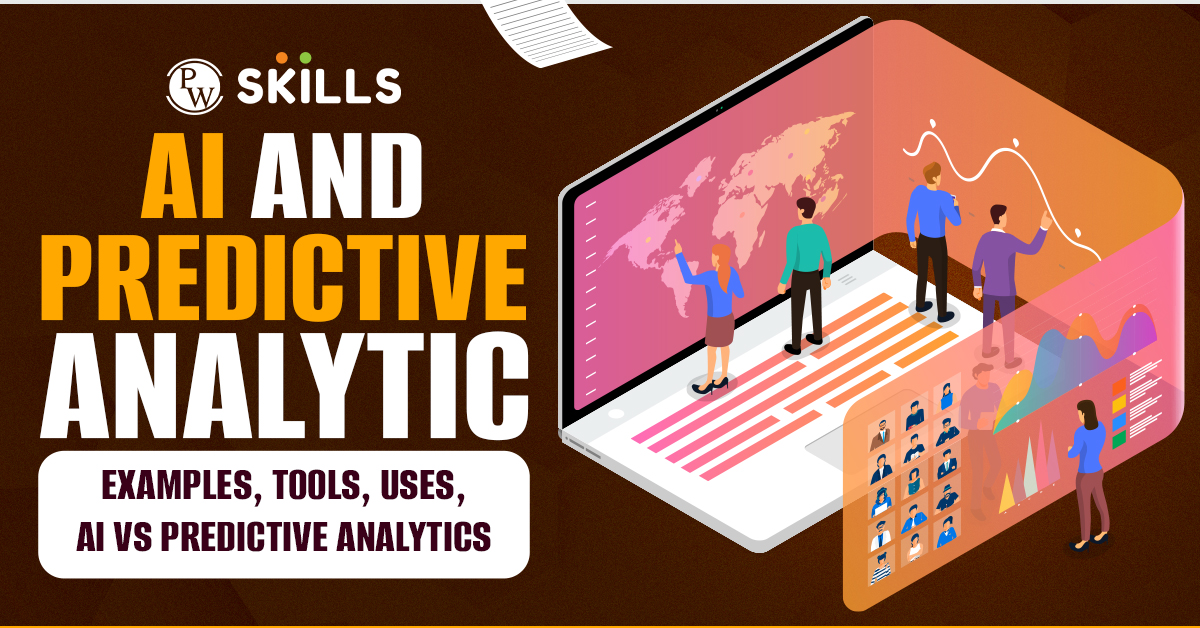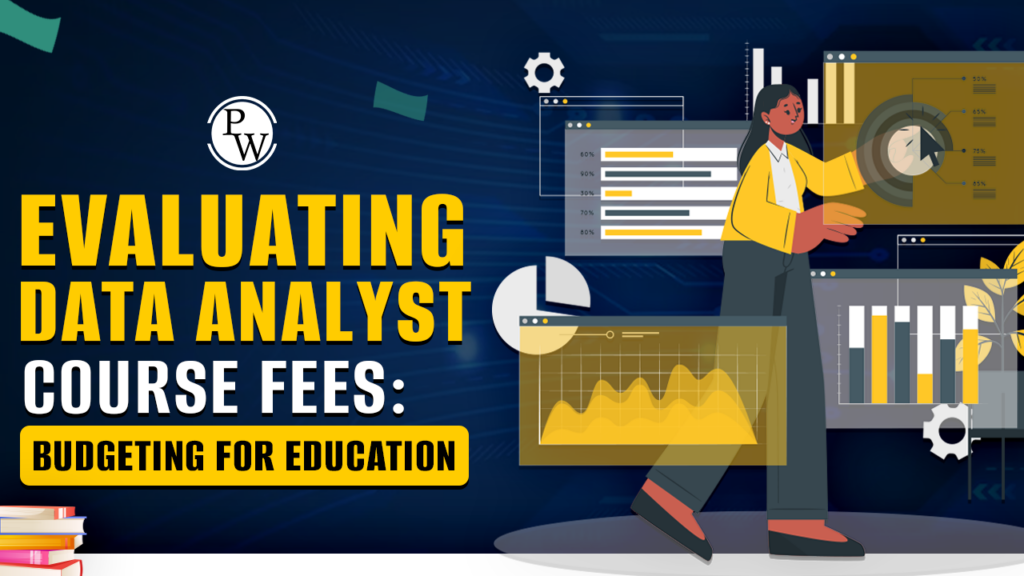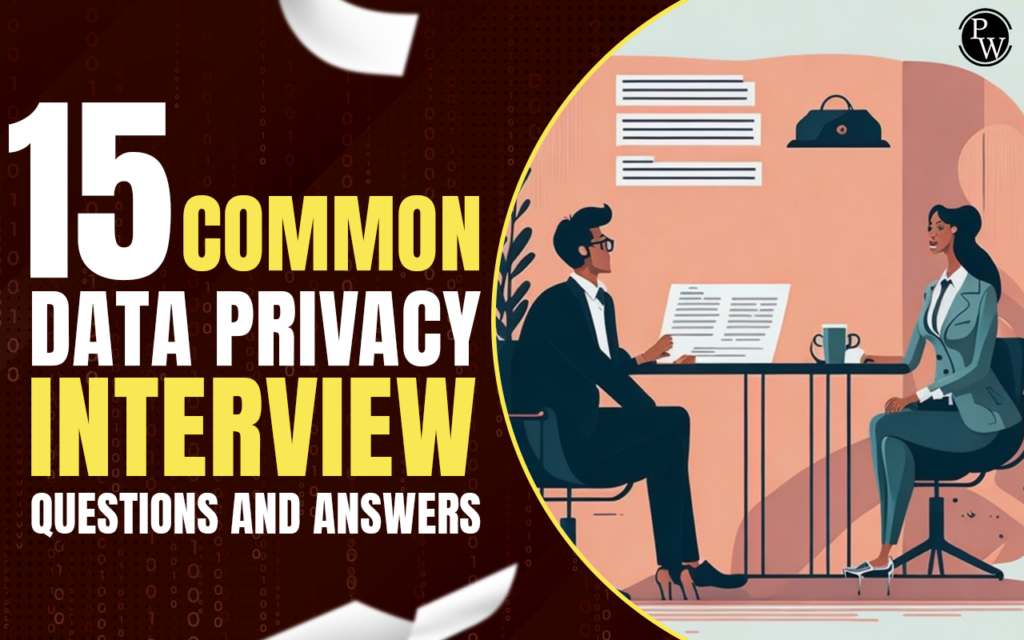AI and Predictive Analytics: Predictive analytics involves using methods from data mining, statistics, machine learning, mathematical modelling, and artificial intelligence to foresee future events. It relies on past data to make predictions, and we often apply predictive analytics in our everyday lives without much consideration.
For instance, forecasting the sales of a product (like flowers) in a market for a specific day. If it’s Valentine’s Day, the sales of roses would be substantial! It’s straightforward to state that the sales of flowers would be greater on special occasions compared to ordinary days.
In predictive analytics, we identify the factors accountable, collect data, employ methods from machine learning, data mining, predictive modelling, and other analytical approaches to foresee the future. The findings from the data encompass patterns, the connection among various factors that may have been unknown before. In this blog, we’ll talk about AI and predictive analytics, and much more!
If you want to build a successful career in Data Analytics, then PhysicsWallah’s Data Analytics course is highly recommended for your career! With our course you’ll be equipped with the knowledge and skills to succeed as a data analyst. So, don’t wait! Enoll now and use the coupon code – “READER” to get an exclusive discount on all courses from PW Skills.
What is AI and Predictive Analytics?
Predictive Analytics involves employing mathematical and statistical techniques, which include artificial intelligence and machine learning, to anticipate the value or condition of something important. It can be applied to address a wide range of inquiries, such as:
- Which asset will fail within the next 75 days?
- How many units of product X will be sold next month?
- How much energy will a specific customer require in the next 15 minutes?
- Which customers will likely churn in the next 30 days?
- Is this transaction fraudulent?
- Is this image a car?
The advantages of predictive analytics cover a broad spectrum and can be highly impactful for a company. Specifically, predictive analytics fueled by AI/machine learning integrated into business operations can lead to notable enhancements like lower costs, higher profit margins, improved safety and reliability, and reduced environmental impact.
An ordinary use of AI and predictive analytics is seen in C3 AI Reliability, aiding businesses in reducing downtime, increasing production, and lessening potential environmental harm, such as avoiding leaks.
AI and Predictive Analytics Examples
Predictive analytics can streamline operations, increase revenue, and manage risks for nearly any business or industry, such as banking, retail, utilities, public sector, healthcare, and manufacturing. In some cases, augmented analytics are employed, utilising machine learning on large datasets. Here are additional examples of use cases, including data lake analytics.
- Fraud detection: Predictive analytics observe every activity on a company’s network instantly to identify irregularities that suggest fraud and other potential weaknesses.
- Conversion and purchase prediction: Businesses can take steps, such as redirecting online advertisements to visitors, using data that forecasts a higher probability of conversion and purchase intent.
- Risk reduction: Credit scores, insurance claims, and debt collections leverage predictive analytics to evaluate and predict the probability of future defaults.
- Operational improvement: Businesses employ predictive analytics models to predict inventory, handle resources, and operate with increased efficiency.
- Customer segmentation: By segmenting a customer base into distinct groups, marketers can employ predictive analytics to make future-focused decisions and customise content for different audiences.
- Maintenance forecasting: Companies utilise data to anticipate when regular equipment maintenance will be necessary and can plan it in advance, preventing issues or malfunctions.
Also Read: What is the roadmap to become data analyst?
What is the Difference Between Predictive Analytics and Generative AI?
Generative and predictive AI are experiencing numerous progressions, yet their approaches, arrangements, and goals vary. We clarify the distinctions between these two AI systems.
-
Methodologies
While generative and predictive AI both depend on recognizing patterns in data, their fundamental objectives and methods differ significantly.
Generative AI is focused on creating entirely new content. Instead of simply analysing or processing existing information, it draws inspiration from the data it has been trained on and produces unique outputs that were not present in the training data.
Take, for instance, making brand-new pictures. Look at OpenAI’s DALL-E 2, which can create fresh images of made-up creatures, things, or situations using text descriptions given by the user. This demonstrates how creative AI doesn’t just repeat learned information but puts together different parts to produce something different.
On the flip side, predictive AI is based on predicting. By looking at old information, it recognizes previous patterns and trends. After figuring out these patterns, predictive AI can link them with present data to predict what might happen in the future.
Take e-commerce, for instance: Businesses examine customers’ past buying habits to forecast which products might catch their interest next. These forecasts guide product suggestions, resulting in higher sales and improved customer experiences.
-
Algorithmic structures
Neural networks act as the minds powering AI, designed to handle and comprehend information much like human brains make sense of the world. Both generative and predictive AI utilise these neural networks, although they have distinct designs and purposes.
In text-related tasks, generative AI frequently relies on NLP and transformer algorithms. Consider this as the AI’s method of deciphering a foreign language. These algorithms aid the AI in handling text by converting words into mathematical representations, enabling the AI to recognize meaning and the complex connections between words.
Nevertheless, when dealing with pictures, generative AI could choose GANs. An easy way to understand GANs is to imagine two artists: one is working on making a perfect fake painting, while the other is trying to tell if it’s real or fake. As this process repeats, the fake artwork gets better, and the AI becomes better at distinguishing between the two, helping it create top-notch visuals.
A different approach involves diffusion, where an image intentionally goes through blurring and restoration. This process teaches the AI about the characteristics of the image, helping it generate various versions.
Alternatively, predictive AI concentrates on making precise predictions based on past information. To achieve this, the AI uses different statistical algorithms on datasets with predetermined results, referred to as labelled data.
Consider the random forest technique, for instance: Picture a group of people trying to agree—each person gives a vote, and the choice is made based on what most people decide.
-
Output objectives
Generative AI seeks to generate or create something entirely new. This AI isn’t strictly about replicating what has been seen before, but rather about innovating, introducing original outputs that didn’t exist.
Consider a scenario where a graphic designer wishes to create a unique logo. Instead of starting from scratch, they might use a generative AI tool, which, based on its previous training, produces a variety of innovative designs.
The tool doesn’t just replicate past logos but introduces fresh, creative concepts based on the patterns it has learned. Similarly, authors might use it to brainstorm distinctive plot points or settings, and musicians could harness its power to generate new melody lines or rhythms.
Predictive AI is anchored in the past, aiming to use historical data to make accurate projections about future occurrences. It thrives on patterns, consistency, and established data to derive its conclusions.
Also Read: 5 Recommended Data Analytics Courses for Commerce Students
Difference Between AI and Predictive Analytics
If you’re ever heard about AI and predictive analytics, then you might think that they both are similar. However, they are not at all similar. Here are the main differences between them:
| Difference Between AI and Predictive Analytics | ||
| Feature | Predictive Analytics | Artificial Intelligence |
| Definition | Uses historical data to identify patterns and predict future outcomes. | Uses machine learning to learn from data and make decisions without being explicitly programmed. |
| Goals | To predict future events and trends. | To automate tasks, improve decision-making, and create new products and services. |
| Techniques | Uses statistical models, machine learning algorithms, and data mining. | Uses deep learning, natural language processing, and computer vision. |
| Applications | Customer behaviour analysis, fraud detection, risk assessment, and inventory management. | Self-driving cars, medical diagnosis, and product recommendations. |
| Advantages | Can be used to make predictions about complex systems. | Can learn from large amounts of data and make decisions that are more accurate than humans. |
| Disadvantages | Can be passed by the data it is trained on. | Can be expensive to develop and deploy. |
| Maturity | Well-established and widely used. | Still emerging, but growing rapidly |
AI Predictive Analytics Tools
Here are some Ai predictive tools to be used :
IBM SPSS Statistics
It is one of the most reliable and most used predictive analysis tools. It has been around for a long time and offers a robust list of capabilities, including the Statistical Package for Social Sciences(SPSS) modeller. The cost pricing of IBM SPSS is also easily understandable. For the first-time user, the platform is complicated.
That’s why the user needs to be experienced. A few key features are data preprocessing, advanced statistics, extract, forecasting, decision tree, neural network, direct marketing, etc.
SAS Advanced Analytics
SAS is another useful analytics tool. It offers different incredible predictive analysis tools. These analytics tools could be used according to the purpose. A few key features are descriptive analysis, predictive modelling, code-based model development, dynamic group processing, and many more.
SAP Predictive Analytics
SAP Solution is good for predictive analytics. It is a product of SAP Software. The company provides different options available when it comes to features like SAS Advanced Analytics tools. It provides advanced machine learning and security features for analytics models.
A few key features are Python API, data security, compliance features, automated data preprocessing, predictive modelling, native pyspark modelling, and many more. It supports datasets with more than 10000 columns.
H2O
It is one of the best open-source tools. It also provides the data mining feature that puts this tool on the top analytics tools list. Its high performance, affordability, and flexibility make it a renowned predictive analytics tool for users.
H2O is used for expert data science and citizen data scientists. A few key features are automatic feature engineering, machine learning interpretability, natural language processing, automatic scoring pipelines, time series analysis, and many more.
Oracle DataScience
Oracle also entered the market of data analysis. They purchased a renowned startup company known as DataScience and expanded the tool DataScience. The DataScience tool is mainly used for organisations with the Oracle database and cloud service.
QResearch
This tool is mainly developed to perform analysis in the market research field. The QResearch tool provides all the required facilities for better market analysis. It is a highly automated tool and needs less time for performing analysis. This tool can be integrated with R, the Microsoft Office product.
Also Read: Python for Data Analysis
Which AI is Used for Prediction?
Predictive AI makes predictions, recommendations and decisions using various AI and machine learning (ML) techniques. Technically speaking, generative AI often uses many predictive processes to incrementally predict the next unit of content within a result.
AI Predictive Analytics in Healthcare
The healthcare industry is on the verge of a major transformation with AI technology. The introduction of predictive analytics, personalised medicine, and disease detection has made it possible to provide better care to patients than ever before. With AI, medical professionals can now analyse large volumes of patient data in real-time and make informed decisions quickly.
AI has also made it possible for doctors to have access to advanced imaging tools that can help them diagnose diseases more accurately. This technology can assist physicians in detecting cancer cells much earlier than traditional methods. In addition, AI-powered robots are being developed that could perform surgeries with greater precision than human surgeons.
Another area where AI is changing the healthcare industry is by reducing the administrative burden on healthcare workers through automation. By automating routine tasks like scheduling appointments or billing insurance companies, medical staff will be able to focus more on providing quality care for their patients.
AI is revolutionising the healthcare industry by creating new possibilities for predictive analytics, personalised medicine, and disease detection. Medical professionals now have access to powerful tools that enable them to deliver superior care efficiently and effectively while reducing costs overall.
How is AI Used in Analytics?
AI data analysis is the use of AI techniques and data science to enhance the processes of cleaning, inspecting, and modelling structured and unstructured data. The overarching goal is to uncover valuable information to support drawing conclusions and making decisions.
AI helps by automating a lot of the process. Instead of having a human go through everything, businesses can train a computer program to handle the heavy lifting. Since AI is the simulation of human intelligence, it can be used to spot trends and learn from the data it’s trained on to provide accurate output.
Understanding the difference between data analytics and analysis is important when learning about this topic—although the two are often used interchangeably. Data analytics is a subset of business intelligence, which uses machine learning to discover new insights into the data.
Data analysis is the process of inspecting, cleaning, and modelling data to discover useful information, draw conclusions, and make informed decisions. We’ll take you through the steps.
- Data collection. Businesses decide what they want to learn and then collect datasets from trusted sources to analyse.
- Data cleaning. Data scientists examine their data sources to remove irrelevant information and correct bad input from the raw data.
- Data analysis. The analysis process comes after properly cleaning the data. Businesses can use this data to look for trends and find insights to use.
- Data interpretation. Trends learned from the data analysis process can help inform business analytics decisions about the future.
Also Read: What is AI Analytics? Tools, AI Vs Data Analytics, Future
In Predictive Analytics, What Function Does AI Serve?
Data scientists use predictive models to identify correlations between different elements in selected datasets. Once data collection is complete, a statistical model is formulated, trained, and modified to generate predictions.
The workflow for building predictive analytics frameworks follows five basic steps:
- Define the problem: A prediction starts with a good thesis and set of requirements. For instance, can a predictive analytics model detect fraud? Determine optimal inventory levels for the holiday shopping season? Identify potential flood levels from severe weather? A distinct problem to solve will help determine what method of predictive analytics should be used.
- Acquire and organise data: An organisation may have decades of data to draw upon, or a continual flood of data from customer interactions. Before predictive analytics models can be developed, data flows must be identified, and then datasets can be organised in a repository such as a data warehouse like BigQuery.
- Pre-process data: Raw data is only nominally useful by itself. To prepare the data for the predictive analytics models, it should be cleaned to remove anomalies, missing data points, or extreme outliers, any of which might be the result of input or measurement errors.
- Develop predictive models: Data scientists have a variety of tools and techniques to develop predictive models depending on the problem to be solved and nature of the dataset. Machine learning, regression models, and decision trees are some of the most common types of predictive models.
- Validate and deploy results: Check on the accuracy of the model and adjust accordingly. Once acceptable results have been achieved, make them available to stakeholders via an app, website, or data dashboard.
AI and Predictive Analytics FAQs
What is AI in Predictive Analytics?
AI in Predictive Analytics involves using advanced algorithms and machine learning techniques to analyse historical data, identify patterns, and make accurate predictions about future events or outcomes.
How does AI enhance Predictive Analytics?
AI enhances Predictive Analytics by automating the analysis of large datasets, discovering complex patterns, and continuously improving prediction accuracy, enabling businesses to make informed decisions and optimise processes.
What industries benefit from AI-driven Predictive Analytics?
Industries such as finance, healthcare, marketing, and manufacturing benefit from AI-driven Predictive Analytics by gaining insights into customer behaviour, optimising resource allocation, predicting equipment failures, and improving overall decision-making processes.
What role does machine learning play in Predictive Analytics?
Machine learning algorithms play a crucial role in Predictive Analytics by learning from historical data patterns, adapting to new information, and providing probabilistic predictions, allowing organisations to anticipate future trends and make proactive decisions.
How does AI address challenges in traditional Predictive Analytics?
AI addresses challenges in traditional Predictive Analytics by handling complex and non-linear relationships within data, automating feature selection, and adapting to changing patterns, thereby improving the accuracy and reliability of predictive models.





